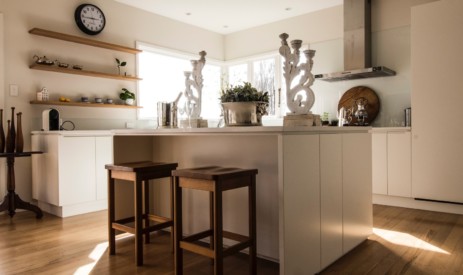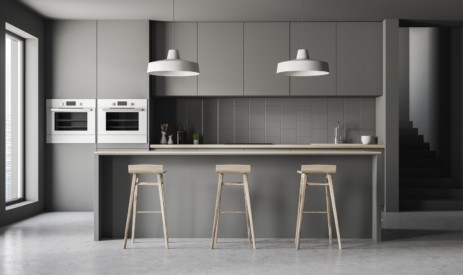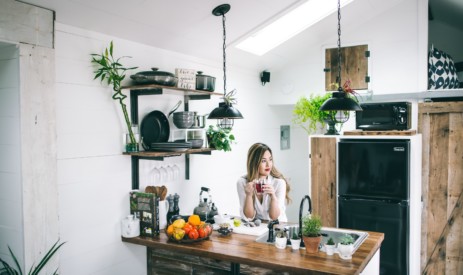How To Master Country Kitchen Style
The rustic kitchen look seems to cycle in and out of fashion every 15–20 years, and it’s on the ascendancy right now. As with all styles, it’s not to everyone’s taste, and it has to be said that it doesn’t suit all home styles and layouts. It tends to find its natural place in ground-floor kitchens in older buildings, preferably overlooking a garden, because there’s always an element of letting the outside in with country kitchen designs. So here’s our take on the style, with a few pointers to make sure it looks as genuine and honest as possible.
What is country kitchen style?
It’s hard to pin down a specific set of attributes that end up creating a country kitchen – it’s more about the attitude behind it. The overarching feel is a cottage kitchen from a time before the arrival of flat-pack furniture and wall-mounted kitchen units. Back then, there was an element of make do and mend about the kitchen, partially for economic reasons, but also because country homes could be quite isolated, with items from the farmyard being liberally re-purposed, and roughness around the edges being the norm.
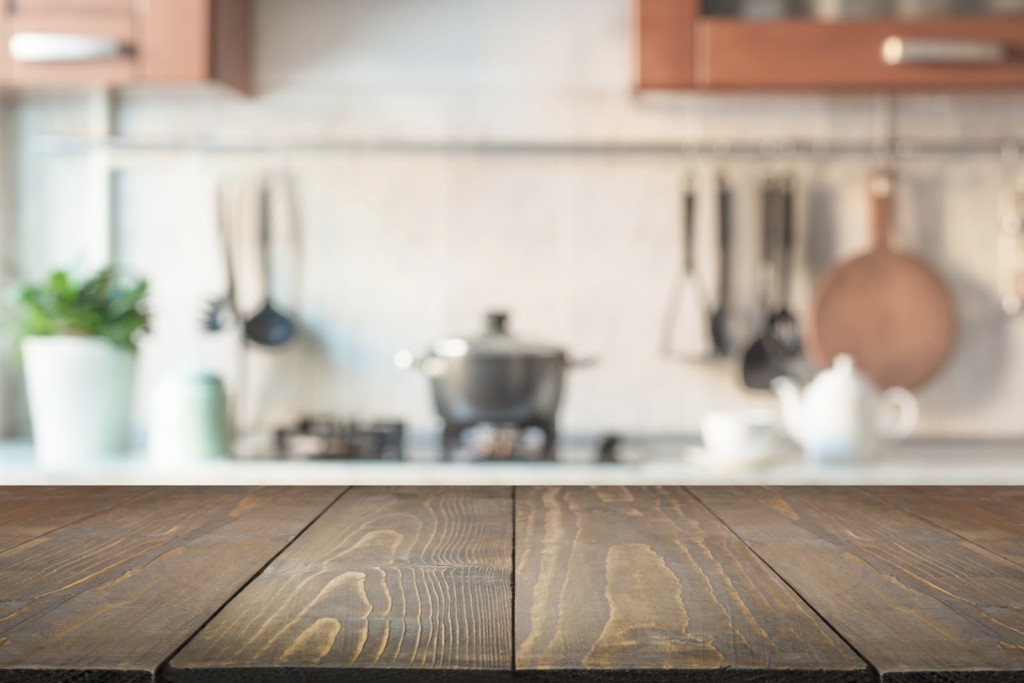
So does this mean microwaves, blenders and your favourite silicone spatula are out of the question? Only if you’re aiming for a museum-piece kitchen. Most of us can tolerate a few modern conveniences, even if we hide them away. Remember – it’s all about the feels.
How to achieve the style
The ideas below are pick and mix in nature. Some are big construction jobs; others are small details with big impacts. How many you choose depends on how rustic and authentic you want to go.
Choose appliances carefully
Most older kitchens would have had a cast-iron stove, either painted or enamelled. The classic AGA was more than just an oven – it was the heart of the home’s heating, and would often be left on permanently. While they are still relatively popular in their niche, mainstream oven manufacturers have now started to make modern ovens that have distinctly classic lines, colours, dials and details, meaning they fit perfectly into the country kitchen.
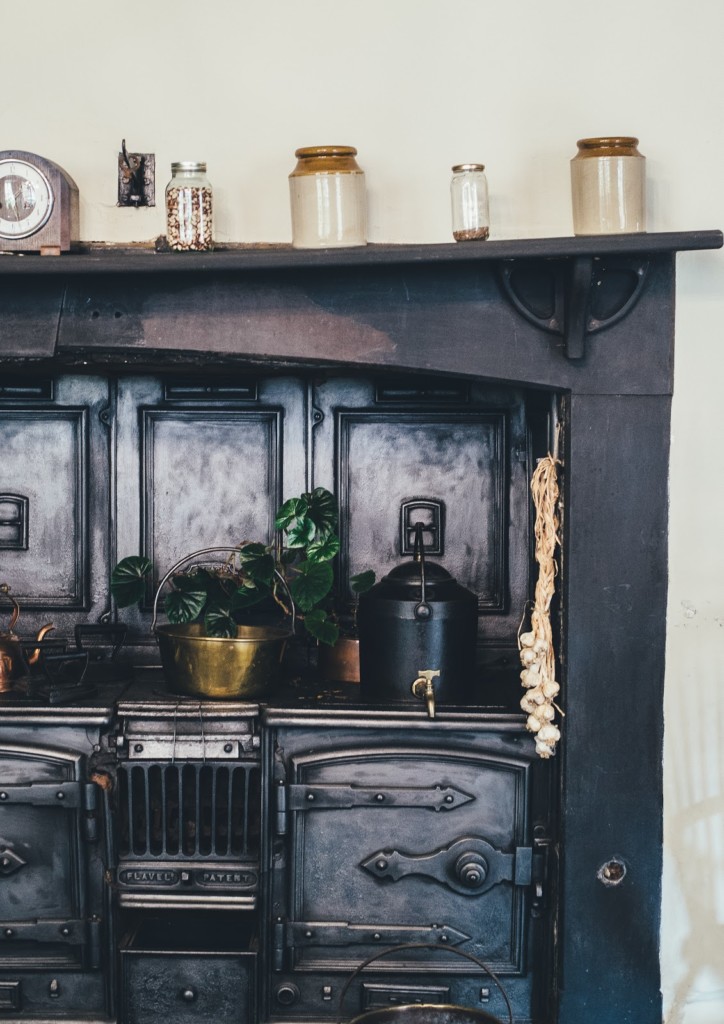
That leaves kettles, microwaves, toasters and so on, and it’s really up to you where you want rustic to end and modern to begin. A lot of manufacturers are on the ball here, and if you shop around you’ll find fabulous stainless steel or enamelled examples that won’t break the bank. Just avoid white plastic and you’ll probably be OK!
Relocate appliances if you can
Unfortunately, rustic washing machines and dishwashers are impossible to find. If you have a utility room, they might be comfier there so as not to ruin the harmony of your kitchen’s aesthetic. If not, you could always hide them behind wooden doors, or section off an area with a false wall or stack of shelves.
Lots of wood on display
The signature material of a country kitchen has to be timber. Tables, chairs, shelves, cupboards and worktops are all wooden, usually pine, but oak definitely works too. If there’s space, a large, chunky wooden table will do a lot of work countrifying the kitchen, and unmatching wooden chairs finish the look.
Antique ornaments
Not everything in the kitchen has to be functional. Scouting antique and charity shops is a great way to l pick up all sorts of treasures from yesteryear, and will really let you drive home that rustic, vintage appeal. Go big on the copper and brass with semi-functional, semi-decorative items like pans and tools, plus porcelain ornaments to add a feeling of ‘lived-in’ homeliness.
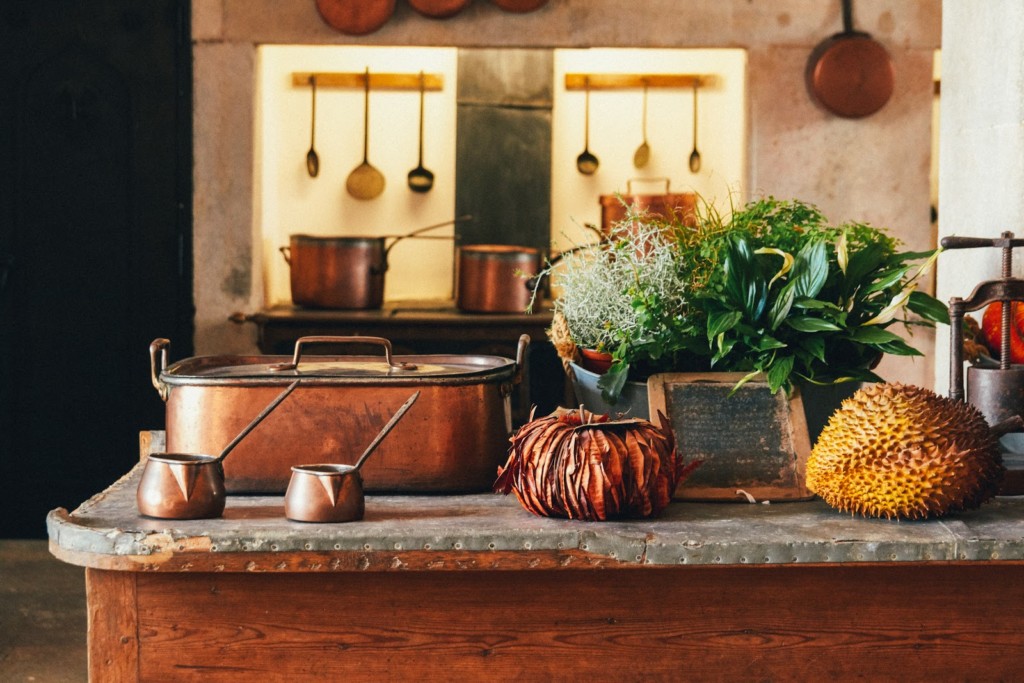
Befriend a reclaimer
Get to know all your local reclamation yards. They’re always pulling apart old kitchens and you can find some amazing things, from genuine Belfast sinks and porcelain draining boards to classic chrome and bronze taps and handles. There will also be plenty of details, like lampshades and pan hangers to add personality.
Improvise, mix and match
To truly recapture the spirit of countryside past, don’t be afraid to reclaim and reuse things currently in your possession – even modern things, if they help your kitchen function better. A hotch-potch of old and new is just as authentically rustic as any collection of period pieces.
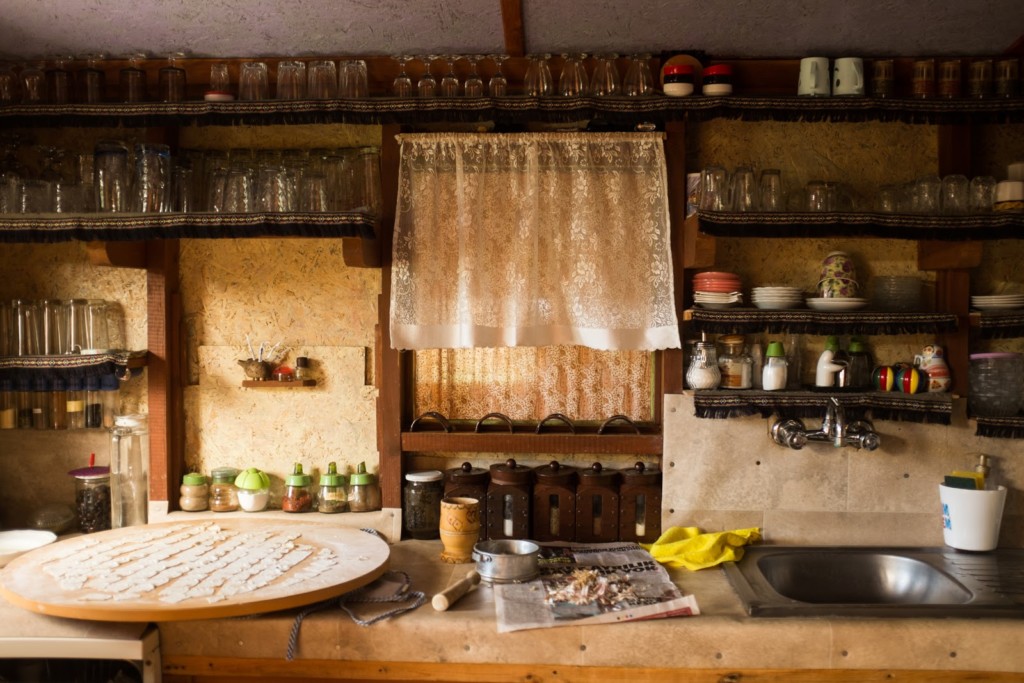
Shelves, not cupboards
Kitchen cupboards give off a distinctly suburban vibe – for a true country look, install shelves, and lots of them. The undulating pattern of the items on the shelves break up the room and make it feel unplanned and authentic.
Display your crockery
Back in the day, crockery was a status symbol, a wedding gift or hard-won luxury that deserved attention. Plates can be arranged on shelves with a grooved channel or half-dowel along their length, and cups can be hung from the underside on brass hooks. You can still find gorgeous kitchen display cabinets, often with a glass front, that are open invitations for you to show off your porcelain.
Visible beams
OK, we’re into dangerous territory here. Fake timber beams might sometimes work, but they have to be just perfect. In a modern concrete and steel building, however, they are usually a no-no. If you’re fully committed and live in a timber-framed house, you can remove the ceiling to expose your beams, but be sure to get professional help, especially with the electrics. When done properly, visible beams are stunningly rustic.
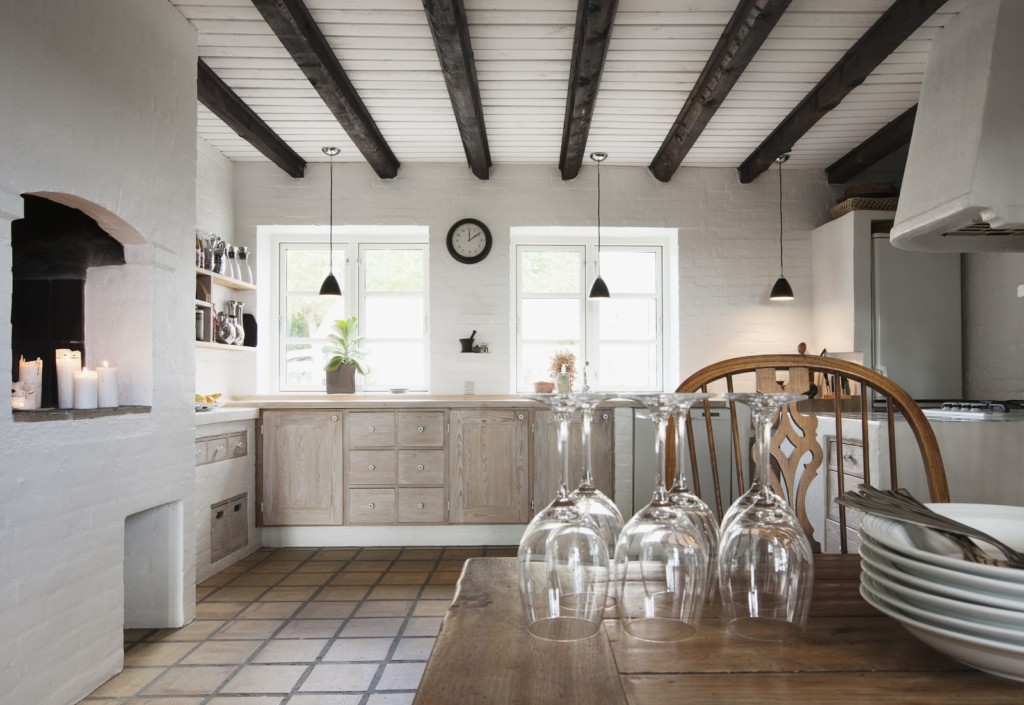
Tiled walls
For a bit of Victoriana, tile the walls, especially around the sink. White usually works, but a brown or cream will add character, and a lustrous green can add depth and shabby-chic charm.
Food on show
The traditional country kitchen would have had all sorts of food on show. Herbs are growing in pots on the window ledge, or tied up in bunches and drying on the walls and hanging from ceilings. Strings of garlic and onions also hang, and the daily bread sits wrapped in paper or cloth on the table. Finally, don’t forget the overflowing fruit bowl!
Lose the plaster
Bare brick is a country kitchen staple, and if you’re up for it, go for it. You don’t have to hack away your plaster – you can get very realistic-looking brick-effect tiles and cladding. Make sure you see a sample though – if they don’t look realistic they can detract from the look.
Choose your flooring well
Your floor needs to maintain the flow of homespun charm. Although stone, terracotta or wooden floorboards are the pinnacle of rustic flooring, you don’t necessarily have to go for the real thing. Superb imitations like Amtico and Karndean are available, and they cope with wetness much better.
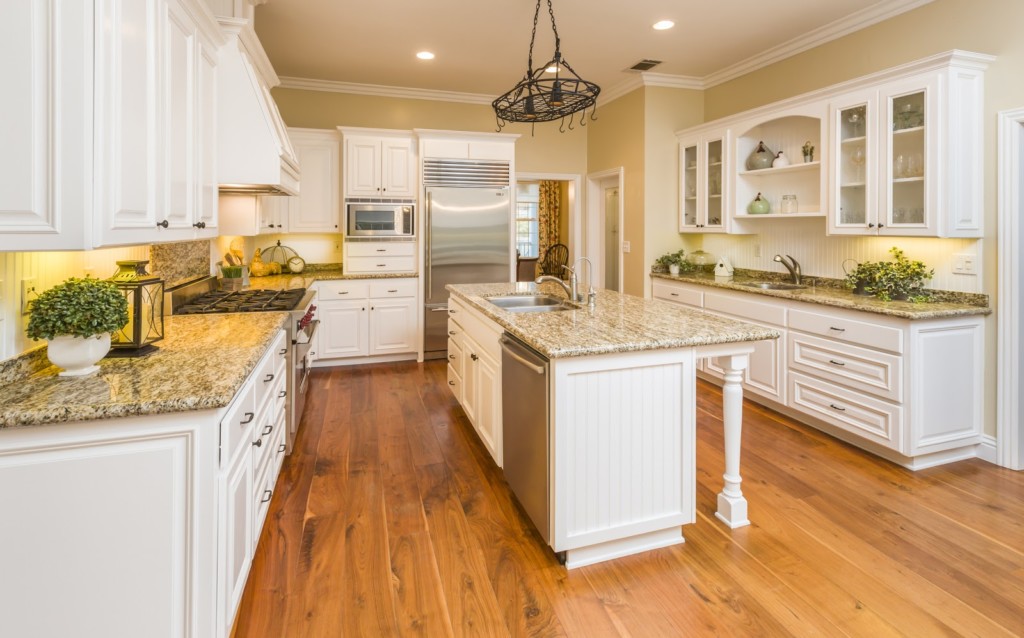
Satisfy all five senses
The kitchen is meant to delight the senses, so try not to leave any out. The sights are covered above, but the feel is just as important. Country means rough, almost unfinished, unvarnished – so maybe lay off the formica. Sounds emanate naturally as you live in the kitchen – the thud of bronze pan on wooden worktop; the clink of dangling pots as they tap against each other; the soft, echoless ambience you get when you remove all smooth surfaces. Aromas are highly evocative – leave out herbs and pot pourri, or even use artificial air fresheners. And the tastes? Well, that’s down to you.
